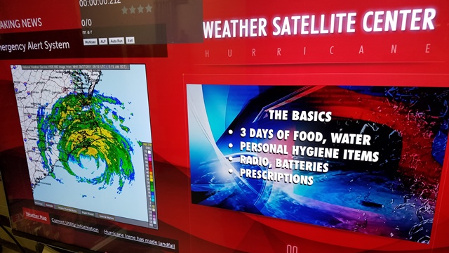ATSC Adopts AEA Spec As Part of ATSC 3.0 A/311
LYDONVILLE, N.Y.—The Advanced Television Systems Committee has approved, as of Dec. 6, the Advanced Emergency Alerting (AEA) specification as part of the A/311 Signaling, Delivery, Synchronization and Error Protection standard—one of the ATSC 3.0 suite of standards. The AEA is based primarily on designs submitted by Monroe Electronics and supported by broadcasters and equipment vendors, the company said today.

"By approving this advanced emergency messaging feature of the standard, the ATSC is enabling broadcasters to leapfrog to IP-based, mobile, customizable and media-rich emergency notifications to their audiences, with the potential for a range of first responder and public safety services as well,” said Ed Czarnecki, senior director of strategic and government affairs for the company, in a Monroe Electronics press release.
AEA makes possible an improved user experience for viewers as relates to emergency alerts regardless of whether they are watching on fixed screens, mobile phones or portable devices. With AEA, broadcasters can do more than transmit EAS messages; they can engage with viewers. It also enables public safety officials to convey more information to viewers, Monroe said.
“The Emergency Alert System as we know it today will continue to be used by television broadcasters. However, Advanced Emergency Alerting will both complement and go beyond the narrow confines of today's EAS," said Czarnecki.
The AEA capability that is now a part of ATSC 3.0 will make it possible for TV stations to send detailed, geo-targeted alerts and warnings to the general viewing public or to specific audience, such as first responders. Multimedia elements can be added to supplement those messages, the company said. AEA will give viewers control over the type, language and display mode of notifications. They will be able to select text, audio or video alerts, making the alerts more accessible to the public.
The AEA specifications adopted by ATSC ultimately lays the foundation for the capabilities being advocated for by the AWARN Alliance, the company said.
More information is available on the Monroe Electronics website.
Get the TV Tech Newsletter
The professional video industry's #1 source for news, trends and product and tech information. Sign up below.
For a comprehensive list of TV Technology’s ATSC 3.0 coverage, see our ATSC3 silo.
Phil Kurz is a contributing editor to TV Tech. He has written about TV and video technology for more than 30 years and served as editor of three leading industry magazines. He earned a Bachelor of Journalism and a Master’s Degree in Journalism from the University of Missouri-Columbia School of Journalism.

